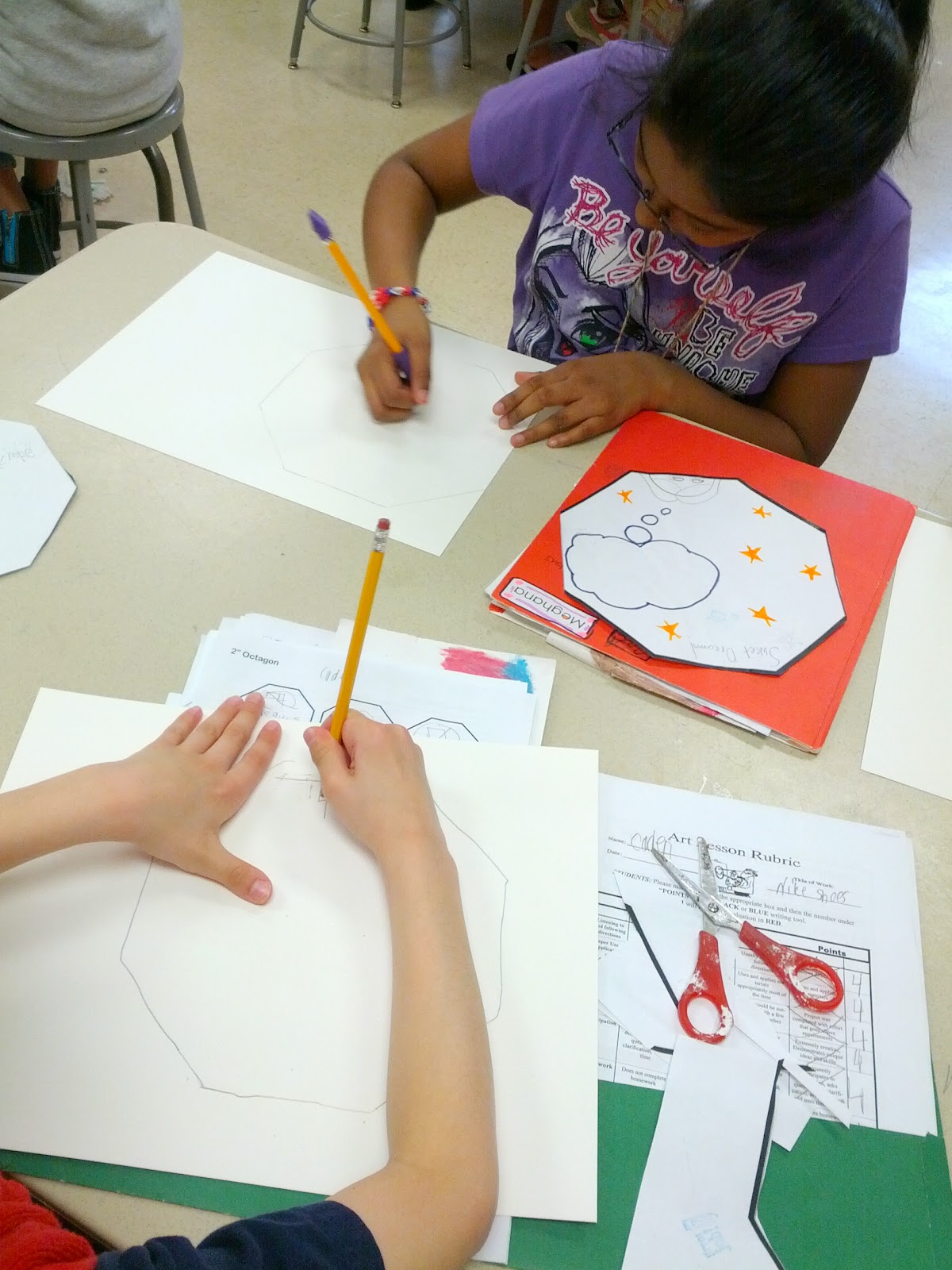Re-thinking Symbols
Purpose and Process
 |
| Jasper Johns's, Flag |
 |
| Scholastic Art Magazine |
I wanted to take this opportunity to challenge my students' perceptions and ideas on the various interpretations of classic, often popular, imagery, by creating a dialogue, re-think symbols and alter a familiar symbol's connotation.
The Stop sign.
Our discussion began with an introduction and overview to the art and life of Jasper Johns. In researching, anything and everything about Jasper Johns, what really caught my attention was how great the impact of "Flag" was in society. We see this encaustic, big representation of the United States flag and think nothing of it. As art teachers, we may think, "Great, let's make Jasper Johns flags for Memorial Day." But this was not the sentiments in 1955 when the work was created (and perhaps this is something we miss about teaching art).
I questioned why someone would go to such lengths to avoid scrutiny. This notion led the class discussion on altering the viewer's perceptions of symbols.
One, amazing, moment was when a debate ensued among my students, defending the work to be art....and insulting.
As we moved forward, our focus steered towards another common, universal image...the STOP sign.
I chose the stop sign to stimulate my students' individualized ideas and use Johns' work as inspiration, not mimic what he did.
Our goal was to use the hexagon and S T O P, as the platform for creating an art work that makes you look twice, exploring with layers and stenciling. At first glance, "Flag" looks like a flag. On closer examination, "Flag" has embedded images, making the viewer to a closer look and re-think its representation and what the artwork is communicating.



Take a closer look....
http://www.moma.org/collection/object.php?object_id=78805
http://en.wikipedia.org/wiki/Jasper_Johns
Google Slide Presenation/Lesson Plan
Scholastic ART Magazine: Jasper Johns Issue
Thanks to Scholastic ART Magazine for publishing this lesson and for the great resources and teacher materials they have created to support arts education!
xoxo, SMocK you.


.jpg)





